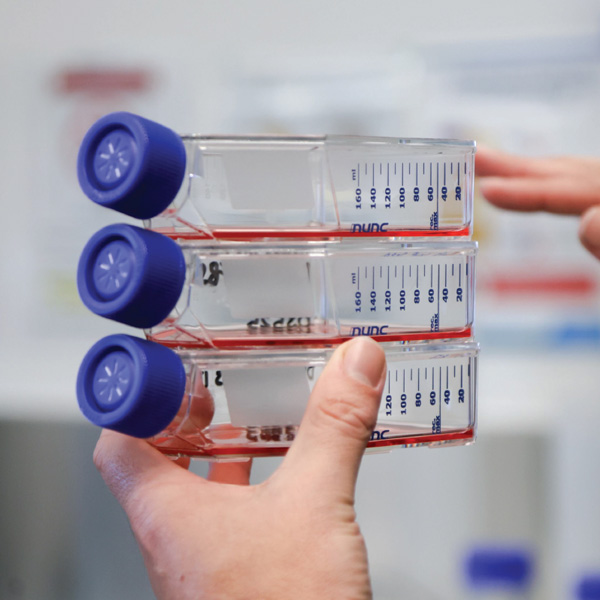Hudson-Monash Children’s Cancer Biobank and Living Biobank
About the Hudson-Monash Children’s Cancer Biobank
The Hudson-Monash Children’s Cancer Biobank is collaboratively operated by the Centre for Cancer Research at Hudson Institute, and Monash Children’s Cancer Centre. Established in 2011, the biobank expanded in 2017 to include a Living Biobank, a cutting-edge resource that features patient ‘avatar’ models. These models accurately replicate the patient’s original tumour, and include cell lines, organoids, and patient-derived xenografts (PDXs).
A resource for world-class research
The Hudson-Monash Children’s Cancer Biobank and Living Biobank provide unparalleled research platforms for investigators focused on childhood, adolescent, and young adult cancers. Since its inception, the biobank has accumulated a rich collection of biospecimens that reflect the diverse types of paediatric cancer. These samples include solid tumour tissue, skin, blood, and bone marrow, all of which are linked to comprehensive biological and health information.
Supporting clinical trials and research
Samples from the Hudson-Monash Children’s Cancer Biobank are instrumental in
supporting clinical trial applications, novel clinical molecular testing, therapy development, and a wide range of national and international translational research projects. This biobank plays a crucial role in delivering advanced genomic testing and developing precision treatments for
children with cancer.
Living Biobank: a dynamic resource
Traditional biobanking methods involve tissue preservation techniques such as formalin fixation or snap freezing, which capture a static snapshot of the tumour. While useful for next-generation sequencing analysis, these methods are limited and can be quickly depleted. The rarity of childhood solid cancers and the lack of reliable preclinical models emphasise the need for a fully annotated Living Biobank. These include cell lines, patient-derived xenografts (PDXs) and three-dimensional organoid models.
The Living Biobank is an Australian first, offering three-dimensional paediatric tumour organoids at this scale and scope. It represents a significant advance in biobanking, providing a vital resource for innovative research into childhood cancer.
Future impact
The Hudson-Monash Children’s Cancer Biobank directly benefits a unique patient cohort of children with limited treatment options and poor prognoses, who often endure severe long-term side effects from treatment. By providing access to tumour tissue and matched clinical data, the biobank enables researchers to improve treatment options, enhance years of life saved, and significantly enhance the quality of life for children with cancer.
Contact
For more information or enquiries: Dilru.Habarakada@hudson.org.au

